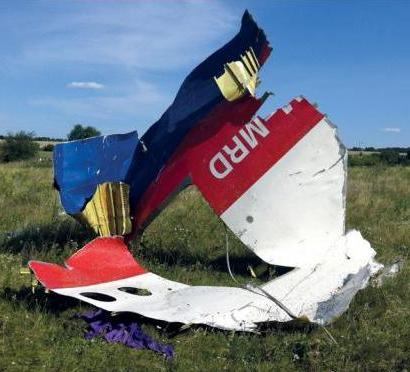Dutch Safety Board Releases Preliminary Report About MH17 Debris
Last week, the Dutch Safety Board released a preliminary investigation report based on the debris of Malaysia Airlines Flight 17. The Boeing 777-200ER was flying from Amsterdam to Kuala Lumpur and crashed in Eastern Ukraine on July 17 of this year. Due to the wide debris field and growing pro-Russia sentiment and conflict in the region, it is believed that the plane was shot down in the air.
As Peter Greenberg stated after the incident, investigators at the crash site should look for striation marks, scorch points, and which way key metal parts of the fuselage are bent. These details can reveal whether the plane was struck by an outside object or exploded due to a detonation from within the plane.
The Dutch Safety Board report is an investigative effort to understand the circumstances surrounding the crash. But many questions are left unanswered. Opportunities for complete, comprehensive investigations have been stifled by ongoing turmoil in the region.
According to the preliminary investigation, here is what we do know:
- The aircraft was in full operating condition and no technical malfunctions were reported
- No evidence of tampering with the airline’s on-board recorders was found
- No engine or aircraft system warnings were detected
- MH17 was traveling in unrestricted airspace at the time of the event
- No distress messages were made by the MH17 crew
- Damage on the fuselage and cockpit suggest multiple impact points from “high-energy objects outside the aircraft”
- That damage “is not consistent with any known failure mode of the aircraft, its engines, or systems”
- Wreckage from the aircraft found in multiple locations indicates the aircraft broke up in the air
The Dutch Safety Board made no mention of any missile impact or indication of such, and the preliminary report specifically states it is not intended to place blame. Numerous armament experts have asserted that the damage described is consistent with a version of the Buk missile that explodes on impact or just before, causing shrapnel to destroy the target. Buk missiles are surface-to-air missiles that were developed by the Soviet Union and the Russian Federation.
The constant turmoil in Eastern Ukraine has prevented investigators from inspecting the crash site, and the lapse between crash and investigation has fueled speculations. Since no casings or evidence of weaponry have been discovered among the wreckage, the use of weaponry is, at this point, pure speculation. However, the limited access to the crash site and pro-Russian control in the area provides a large enough window and motive for tampering with the wreckage before authorities can properly investigate the available evidence.
In order to definitively conclude who is responsible for this incident, authorities would need to identify the location from which the alleged missile was launched. Ideally, remaining weaponry casings could be used to pinpoint the origin of a missile, but the lapse of time between crash and direct investigation could have easily provided the opportunity to remove such evidence.
It is unclear whether Ukrainian or pro-Russian separatists are to blame and whether or not weapons systems were used to bring down the aircraft. Within a year of the crash, a complete and thorough investigation of the incident is expected to be released.
For more information about the crash of Malaysia Airlines Flight 17, visit:
- Peter Greenberg’s Take: What MH17 Means for Malaysia Airlines
- How the MH17 Crash is Changing International Travel
- What Are the Legal Rights of MH17 Victims’ Families?
By Neil Thigpen for PeterGreenberg.com













